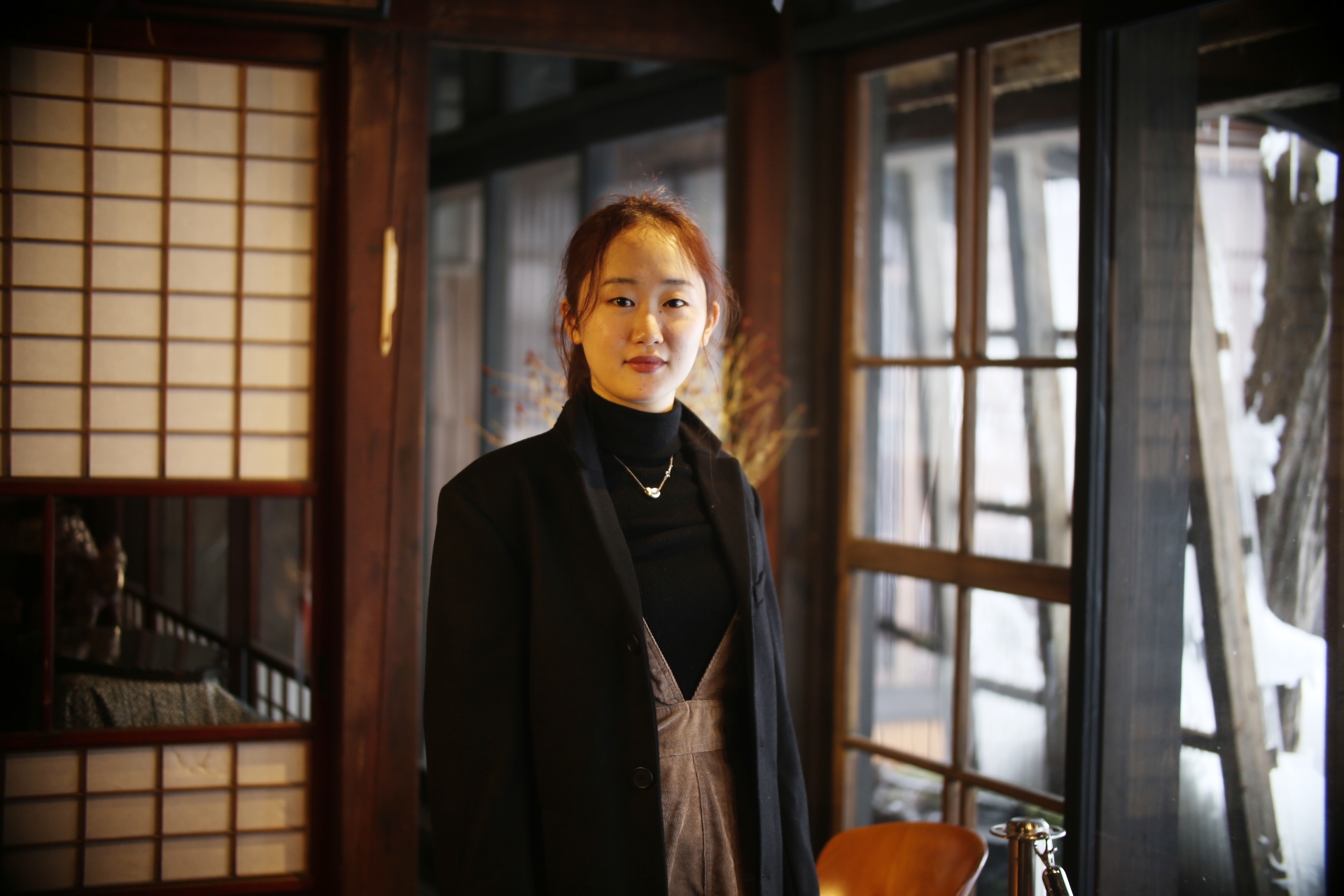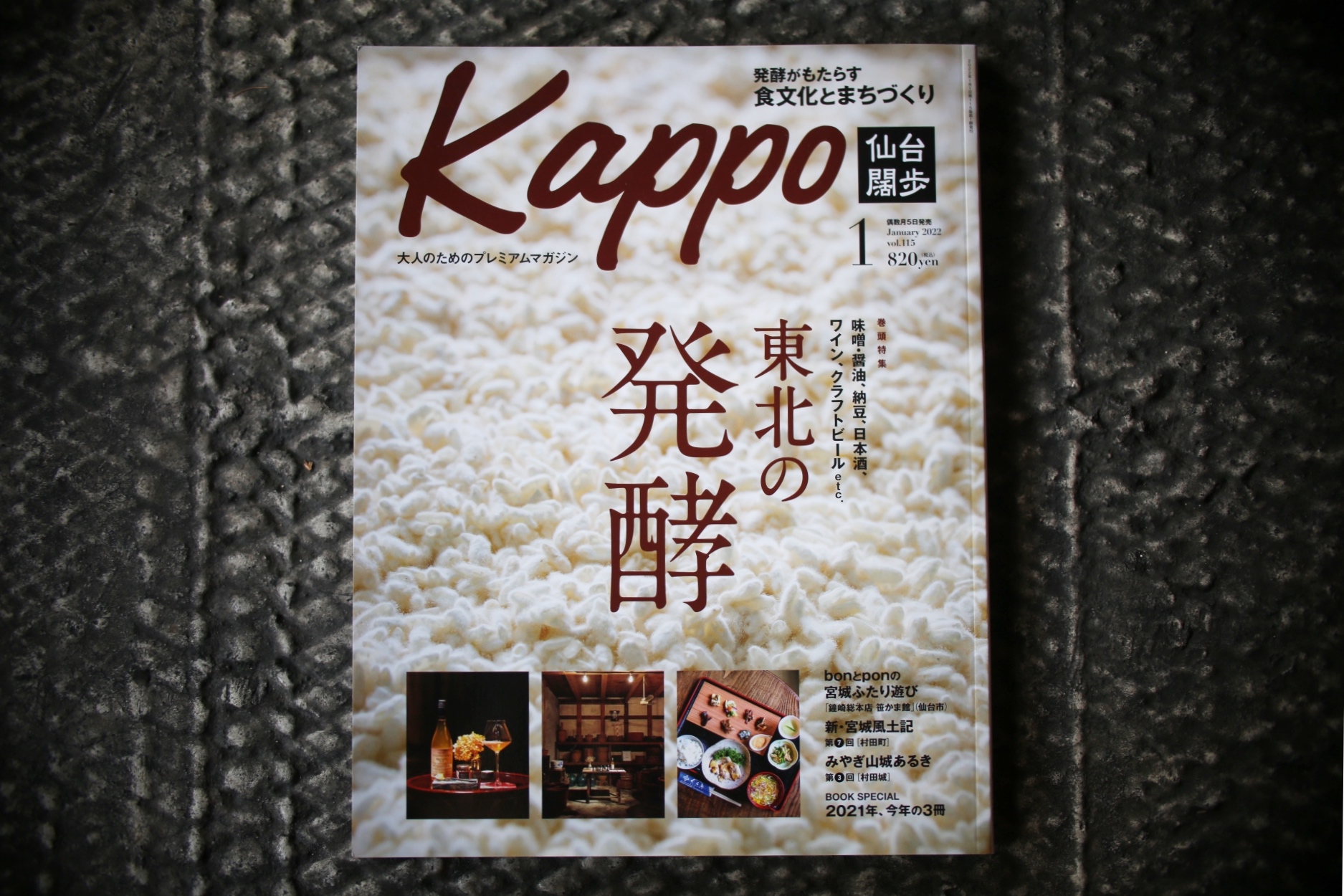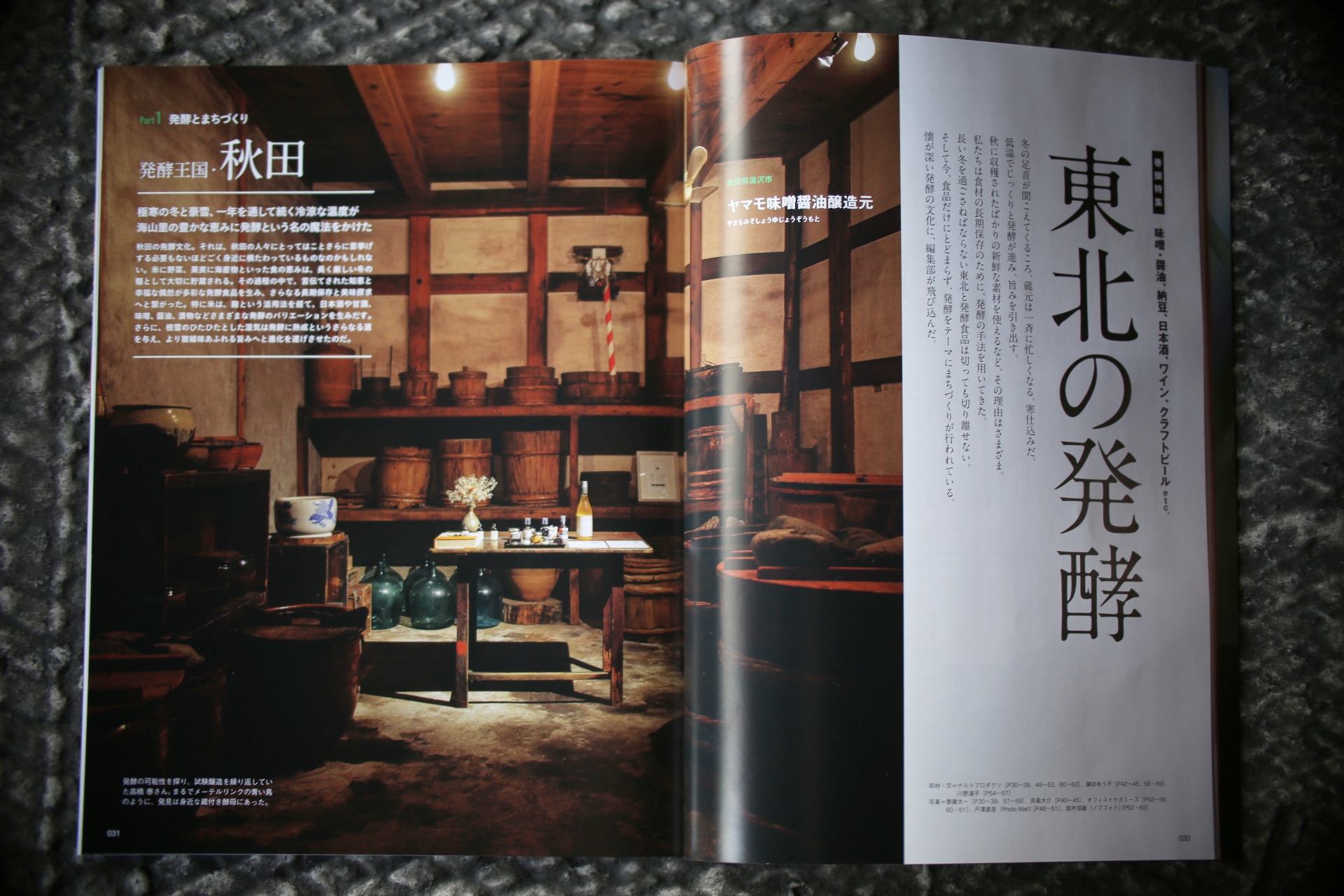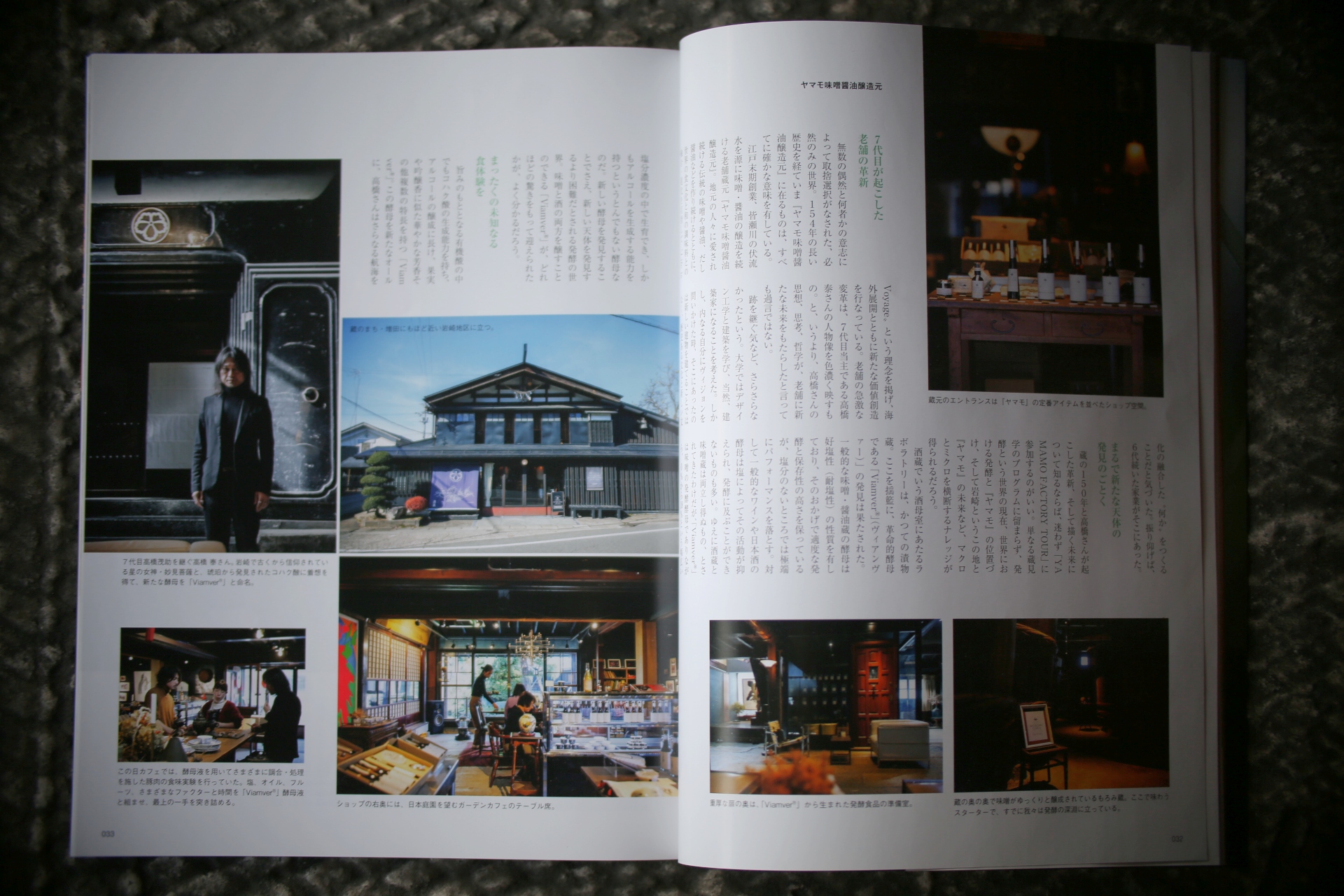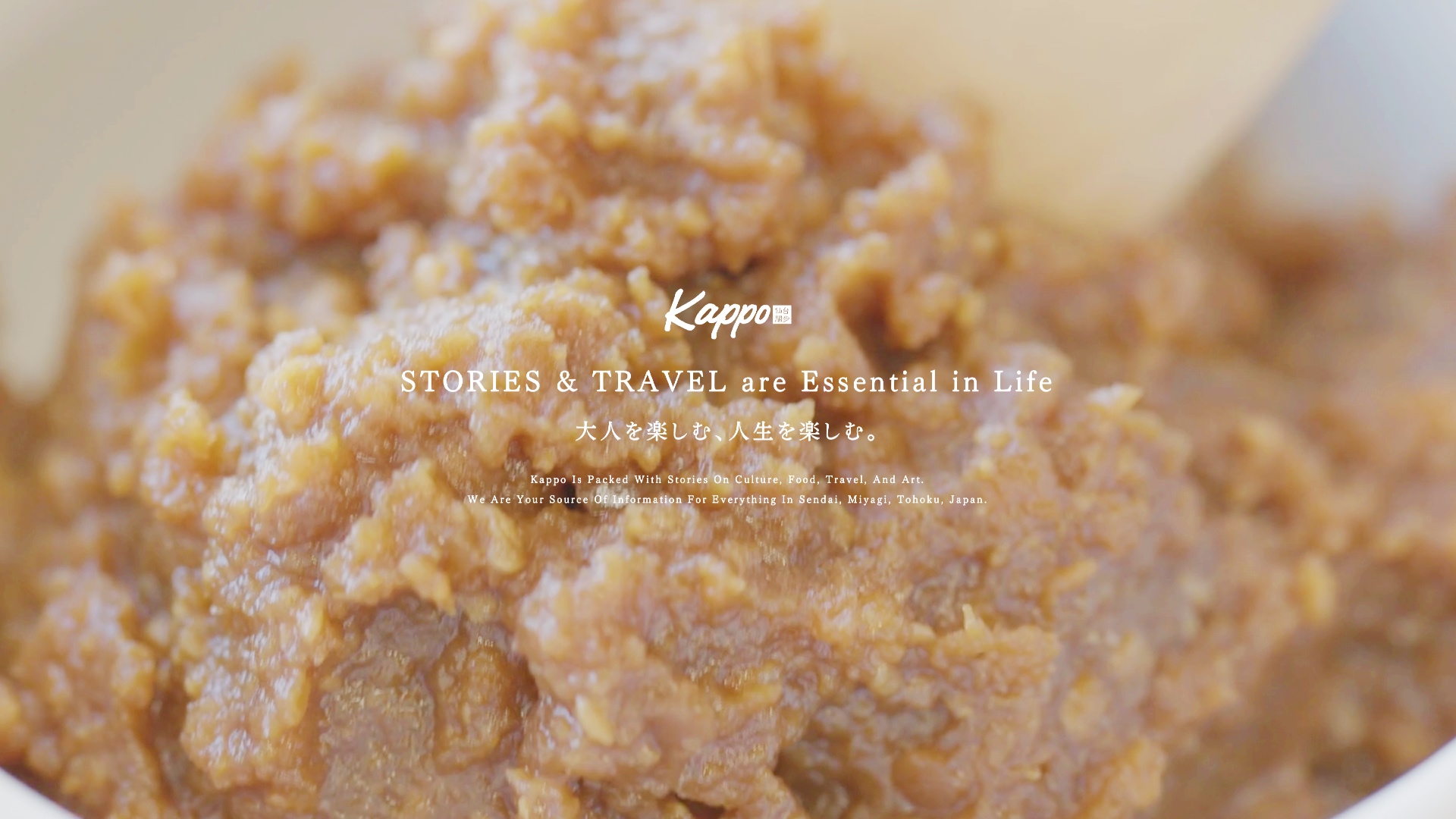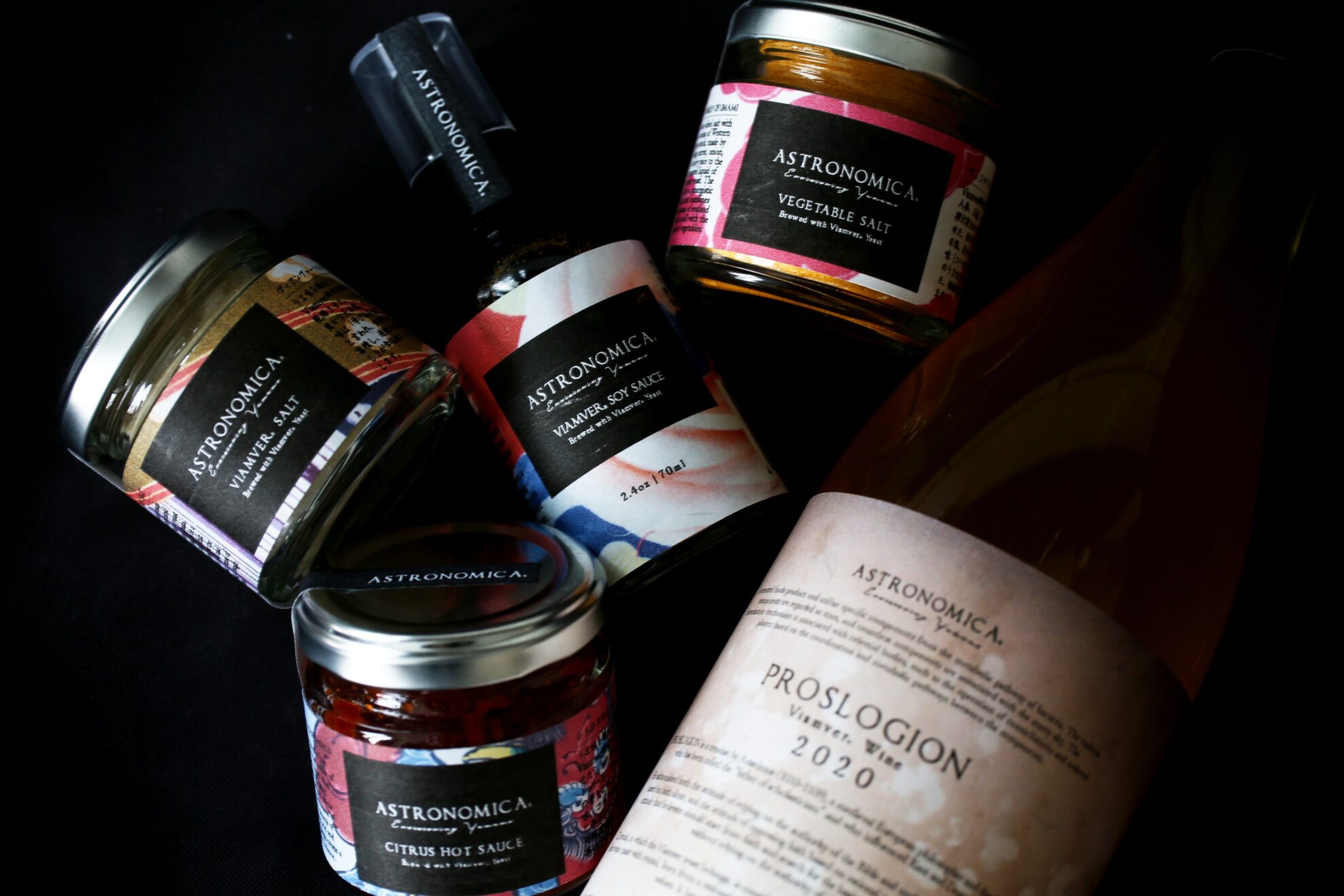“Inspirational Talk x Gastronomy”
様々なジャンルのクリエイターが即興で文化を築いてきました。クリエイターを交えたディスカッションとシェフやソムリエ、ミクソロジストの織り成すイノヴェーティヴな料理を掛け合わせることで創造性溢れる場所を生み出します。このセッションで醸成したインスピレーションを通じ、新たな文化が生まれることを願っています。
.
SESSION_No.007
“Can Indigenous Expressions Change the World? | 土着表現は世界を変えうるのか?”
テクノロジーとグローバル化によって世界レヴェルで最適化された製品やサーヴィスが提供され、生活はより便利に豊かさを実現する一方、土地固有のものは均一化されています。そのカウンターとして、土地に根ざした土着文化と近代技術が融合したビジネスや文化が注目されています。
世界で4度世界一になったレストランnomaはEl Bulliが確立した分子調理を雪国で農業資源の乏しい土着の北欧料理に応用し、さらなる表現を追求しています。イノヴェーティヴバーテンディングの中に土着文化を取り入れながらミクソロジストとして活躍されるThe Certain Barの野村周平氏にカクテルをご提供いただき、最新の現代北欧料理、イノヴェーティヴバーテンディングについてお話を伺います。
また、昨年から渋谷区立松濤美術館 開館40周年記念 白井晟一 入門展が開催されるなど、湯沢市にもゆかりある孤高の建築家、白井晟一が脚光を浴びています。白井はエッセイで『縄文的なるもの』と土着的思想を残すなど、普遍的な思想・哲学を建築に表現し、現代にその価値を示しています。ローカルの時代と叫ばれる中、土着文化をどのように表現し、土地の生活文化を価値付けし、未来に残していくのか。ヤマモ味噌醤油醸造元の茶室「幽玄席」を手掛ける白井晟一の令孫・白井原太氏に建築中の茶室のご案内いただき、議論を深めたいと思います。
.
○The Certain Bar
遠心分離機、真空機、数十種類のスパイス、発酵、蒸留、スモークガン、液体窒素などを使用し、既成概念を覆すカクテルを創造。厳選された限りなく自然に近いお酒、果物、香草、香辛料を混ぜるだけでなく調理の理論を取り入れたイノヴェーティヴな技法を駆使し、カクテルの自由さを伝えする事を使命とする。無農薬・地産地消や農家直送などの新鮮な味はもちろんのこと持続可能性に環境保護に向き合う。近年、World’s 50 Best Bars常連のMelbourne bar Byrdiとの協業で世界から注目を浴びる。
https://www.certain-bar.com/
.
○白井晟一(1905~1983)
京都高等工芸学校(現京都工芸繊維大学)図案科卒業後、ドイツで哲学を学ぶなど異色の経歴をもつ建築家。林芙美子などと交流した滞欧期を経て帰国後、義兄の画家・近藤浩一路の自邸の設計を手掛けたことを契機に独学で建築家への道に進む。その後「歓帰荘」「秋ノ宮村役場」といった初期の木造の個人住宅・公共建築から、「親和銀行本店」「ノアビル」「渋谷区立松濤美術館」など後期の記念碑的建築まで、多くの記憶に残る作品を残した。そのユニークなスタイルから哲学の建築家などとも評される。建築以外の分野でも才能を発揮し、多くの装丁デザインを手がけ、著作や書家としての活動など、建築の枠組みを超え、形や空間に対する思索を続けた。
.
Notification of YAMAMO CREATIVE SESSION _No.007 Holding
“Inspirational Talk x Gastronomy”
Creators of various genres have been building a culture through improvisation. By combining discussions with creators and innovative cuisine woven by chefs, sommeliers and mixologists, we will create a place full of creativity. We hope that through the inspiration fostered in this session, a new culture will be born.
.
SESSION_No.007
“Can Indigenous Expressions Change the World?“
Technology and globalization are providing products and services optimized for the world level, making life more convenient and affluent, while at the same time homogenizing what is indigenous to the land. As a counter to this, businesses and cultures that combine indigenous cultures rooted in the land with modern technology are attracting attention.
Restaurant noma, which has been ranked number one in the world four times, is pursuing further expression by applying the molecular cooking established by El Bulli to indigenous Scandinavian cuisine, which is snowbound and lacks agricultural resources. Shuhei Nomura of The Certain Bar, who is active as a mixologist while incorporating indigenous culture into innovative bartending, will serve cocktails and talk about the latest in contemporary Nordic cuisine and innovative bartending.
The 40th anniversary of the Shoto Museum of Art in Shibuya Ward has been marked with an introductory exhibition by Chenichi Shirai, a renowned architect who is also associated with Yuzawa City. In his essays, Shirai expresses universal ideas and philosophies in architecture, such as the indigenous idea of “Jomon things,” and shows the value of such ideas in the modern age. In this age of the “local,” how do we express indigenous culture, add value to the lifestyle and culture of the land, and preserve it for the future? Genta Shirai, the grandson of Seiichi Shirai, who is in charge of the tea room “Yugen-seki” at Yamamo Miso and Soy Sauce Brewery, will show us the tea room under construction and deepen our discussion.
.
○The Certain Bar
Using centrifuges, vacuum machines, dozens of spices, fermentation, distillation, smoke guns, liquid nitrogen, and more, they create cocktails that defy conventional thinking. It is our mission to convey the freedom of cocktails by using innovative techniques that incorporate the theory of cooking as well as mixing carefully selected liquors, fruits, herbs, and spices that are as close to nature as possible. He is committed to sustainability and environmental protection, as well as fresh flavors made without pesticides, locally produced for local consumption, and directly from farmers. In recent years, he has been attracting attention from around the world for his collaboration with Melbourne bar Byrdi, a regular at World’s 50 Best Bars.
https://www.certain-bar.com/
.
○Seiichi Shirai (1905-1983)
After graduating from the design department of the Kyoto High School of Technology (now Kyoto Institute of Technology), he studied philosophy in Germany and had a unique career as an architect. After returning to Japan after a period of staying in Europe, where he interacted with people such as Fumiko Hayashi, he designed the private residence of his brother-in-law, the painter Koichi Kondo, which led him to become a self-taught architect. Since then, he has left behind many memorable works, ranging from early wooden private residences and public buildings such as “Hankisou” and “Akinomiya Village Office” to later monumental buildings such as “Shinwa Bank Head Office,” “Noah Building,” and “Shibuya Shoto Museum of Art. His unique style has earned him the reputation as an architect of philosophy. He has also demonstrated his talent in fields other than architecture, designing many book covers, writing books, and working as a calligrapher, and has continued to speculate on form and space beyond the framework of architecture.
.
YAMAMO CREATIVE SESSION_No.007 通知召開
“Inspirational Talk x Gastronomy”
各種流派的創作者都有即興創作的文化。我們通過將與創作者的討論和由廚師、侍酒師和調酒師編織的創新菜餚相結合,創造一個充滿創造力的地方。我希望通過我在這次會議中培養的靈感,一種新的文化將誕生。
.
SESSION_No.007
“Can Indigenous Expressions Change the World? | 本土表達能改變世界嗎?”
技術和全球化提供了世界級的優化產品和服務,讓生活更加便捷和富裕,而特定土地的產品和服務是統一的。作為反面,將植根於土地的土著文化與現代技術相結合的企業和文化正受到關注。
曾四次成為世界第一餐廳的noma餐廳,正在將El Bulli創立的分子烹飪技術應用到雪國農業資源稀缺的斯堪的納維亞本土美食中,尋求進一步的表達。 The Certain Bar 的野村周平是一名活躍的調酒師,同時將本土文化融入創新調酒中,他將提供雞尾酒,並談論最新的當代斯堪的納維亞美食和創新調酒。
此外,與湯澤市有聯繫的孤獨建築師白井誠一也備受矚目,例如從去年開始舉辦的白井誠一40週年紀念展。白井在他的文章中表達了建築中的普遍思想和哲學,例如在他的文章中留下了“繩紋”和土著思想,並顯示了它在現代的價值。您如何表達本土文化,珍視這片土地的生活文化,並將其留在未來,同時被稱為當地時代?我想請負責Yamamo味噌和醬油釀造商茶室“幽玄席”的白井晟一先生的孫子白井晟一先生指導我們到正在建設的茶室來加深討論。
.
○The Certain Bar
使用離心機、真空機、數十種香料、發酵、蒸餾、煙槍、液氮等來創造顛覆先入為主的想法的雞尾酒。我們的使命是通過使用創新技術來傳達雞尾酒的自由,這些技術不僅混合了精心挑選並儘可能接近自然的酒精、水果、香草和香料,而且還融入了烹飪理論。不僅無農藥、土產就地消費、農民直送等新鮮口味,而且可持續性面臨環保問題。近年來,他與世界50佳酒吧的常客墨爾本酒吧Byrdi合作,吸引了全世界的目光。
https://www.certain-bar.com/
.
○白井晟一 (1905-1983)
京都工業大學(現京都工業大學)設計系畢業後赴德國攻讀哲學等獨特背景的建築師。在與林文子等人交往後回到日本後,他為姐夫近藤晃一郎設計了自己的房子,自學成為一名建築師。之後,許多令人難忘的建築,從早期的木製私人住宅和公共建築,如“海京莊”和“秋宮村辦事處”,到晚期的紀念性建築,如“神和銀行總店”、“諾亞大廈”和“澀谷翔都美術館” ”。我離開了工作。由於他獨特的風格,他也被視為哲學建築師。他在建築以外的領域展示了自己的才華,參與了許多裝訂設計,並繼續思考建築框架之外的形狀和空間,例如寫作和書法活動。
.
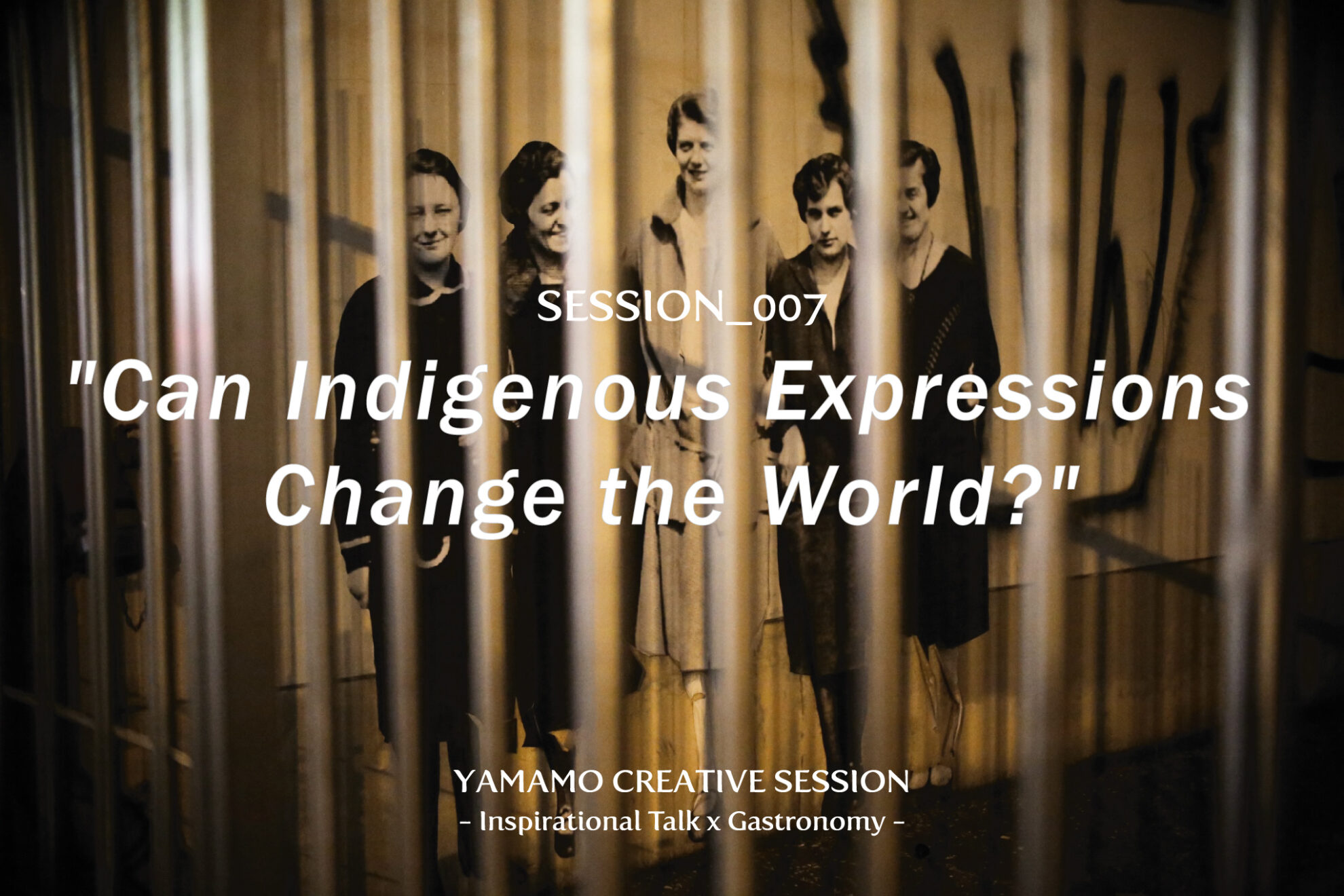
.
【 INFORMATION 】
2022.03.05 / 18:00-21:30 [Door 17:30]
ENTER FEE 13,200yen with Special Dinner(6plates 3drinks)
*info@yamamo1867.comまでお名前、ご住所、電話番号をご記載ください。限定20席のため、参加者は抽選となる場合がございます。予めご了承ください。
ヤマモ味噌醤油醸造元 / 高茂合名会社
Yamamo Miso and Soy Sauce Brewing Company / TAKAMO & Corp.
〒012-0801秋田県湯沢市岩崎字岩崎124
124 Iwasaki, Yuzawa-shi, Akita 012-0801 Japan
Tel +81 (0)183 73 2902
E-mail info@yamamo1867.com
*お車でお越しの方は、イヴェント専用駐車場をスタッフがご案内いたします
*会場は古い建物のため、十分に暖かい格好でお越しください
主催:ヤマモ味噌醤油醸造元
.
【 SCHEDULE 】
17:30 開場
18:00 挨拶(高橋)
18:10 茶室「幽玄席」案内(白井、高橋):スープ、ファクトリーツアー:ワイン・スターター
18:50 第一部セッション「土着表現とイノヴェーティヴバーテンディング」(野村、本村、高橋):カクテル・サラダ、リゾット、メイン
19:30 休憩
19:40 第二部セッション「土着表現と思想・哲学」(白井、本村、高橋):デザート・カクテル
20:20 休憩
20:30 第三部セッション「土着表現の到達点」(本村、高橋)
21:30 閉会
*日程は変更になる場合がございます
.
【 FOOD&DRINK 】
スープ「縄文の祀り」(セリの根と地鶏の心臓、生ハム、ヒエ):幽玄席
スターター「生態系との共存」(豚肉とリンゴ、サツマイモ、ブルーチーズ、パイ):諸味蔵
サラダ「霊符の森」(山菜と鮎とイナゴ、レタス、ニンジン、カボチャ、ナッツ、豆腐):第一部セッション
リゾット「星と鉱物」(雑穀と平貝、シメジ、シイタケ、トマト、キウイ):第一部セッション
メイン「動物霊祭祀」(鹿と鯨、オレンジ、ブドウ):第一部セッション
デザート「反復と連鎖」(ジェラートとクリームブリュレ):第二部セッション
ドリンク1:Viamver®酵母ワイン「Proslogion」
ドリンク2:乳酸発酵リンゴ、Viamverコハゼ、ハーブのコンブチャ、ジン(アルコールの場合)
ドリンク3:櫨蝋、ノンアルコールウイスキーorラム(アルコールの場合)、その他
.
【 INFORMATION 】
2022.03.05 / 18:00-21:30 [Door 17:30].
ENTER FEE 13,200yen with Special Dinner (6plates 3drinks)
Please include your address and phone number at info@yamamo1867.com. The number of seats is limited to 20, and participants may be chosen by lottery. Thank you for your understanding
Yamamo Miso and Soy Sauce Brewing Company / TAKAMO & Corp.
124 Iwasaki, Yuzawa-shi, Akita 012-0801 Japan
Tel: +81 (0)183 73 2902
E-mail info@yamamo1867.com
*If you are coming by car, our staff will guide you to the parking lot for the event.
*The venue is an old building, so please dress warmly.
Organizer: Yamamo Miso and Soy Sauce Brewer
.
【 SCHEDULE 】
17:30 Doors open
18:00 Greeting (Takahashi)
18:10 Guided tour of the tea ceremony room “Yugen-seki” (Shirai, Takahashi): Soup, Factory tour: Wine starter
18:50 First Session “Indigenous Expressions and Innovative Bartending” (Nomura, Motomura, Takahashi): Cocktail Salad, Risotto, Main Course
19:30 Break
19:40 Second Session “Indigenous Expressions and Thought/Philosophy” (Shirai, Motomura, Takahashi): Dessert and Cocktails
20:20 Break
20:30 Session 3: “The Reaching Point of Indigenous Expressions” (Motomura, Takahashi)
21:30 Closing
Please note that the schedule is subject to change.
.
【 FOOD & DRINK 】
Soup “Worship of Jomon” (Seri Root, Jidori Chicken Heart, Cured Ham, Japanese Millet): Yugen-seki
Starter “Coexistence with Ecosystems” (pork, apple, sweet potato, blue cheese, pie): Moromi Zou
Salad “Forest of Spirits” (wild vegetables, sweetfish and locusts, lettuce, carrots, pumpkin, nuts, tofu): Session 1
Risotto “Stars and Minerals” (cereals, flat clams, shimeji mushrooms, shiitake mushrooms, tomatoes, kiwi): Session 1
Main course “Animal Spirit Rituals” (deer and whale, orange, grapes): Session 1
Dessert “Repetition and Chain” (Gelato and Creme Brulee): Session 2
Drink 1: Viamver® Yeast Wine “Proslogion
Drink 2: Lacto-fermented apple, Viamver succulent, herbal kombucha, gin (for alcohol)
Drink 3: Sumac wax, non-alcoholic whiskey or rum (if alcoholic), other
Six course meals using the characteristics of Viamver® yeast and three drinks including two of Nomura’s original cocktails and Proslogion, a Viamver® yeast wine.
*All drinks, including Mr. Nomura’s cocktails, are also available as non-alcoholic drinks.
.
【 INFORMATION 】
2022.03.05 / 18:00-21:30【開門17:30】
入場費 13,200 日元含特別晚餐(6 盤 3 杯飲料)
*請將您的姓名、地址和電話號碼發送至 info@yamamo1867.com。由於名額有限,20個席位,可能會以抽籤方式抽籤。請注意。
Yamamo 味噌醬油釀造商 / TAKAMO & Corp.
124 Iwasaki, Yuzawa-shi, Akita 012-0801 日本
電話 +81 (0) 183 73 2902
郵箱 info@yamamo1867.com
*如果您駕車前來,工作人員將引導您前往活動停車場
*因為場地是一棟老建築,請穿著足夠保暖的衣服進來
主辦單位:山茂味噌醬油機
.
【 SCHEDULE 】
17:30 開幕
18:00 問候(高橋)
18:10 茶室“幽玄席”導遊(白井、高橋):湯、工廠參觀:葡萄酒開胃菜
18:50 第 1 部分“本土表達與創新調酒”(野村、本村、高橋):雞尾酒沙拉、意大利燴飯、主菜
19:30 休息
19:40 第二部分“土著表達和思想/哲學”(白井、元村、高橋):甜點雞尾酒
20:20 休息
20:30 Part 3 會議“土著表達的成就”(本村,高橋)
21:30 結束
*時間表可能會有所變動
.
【 FOOD&DRINK 】
湯“繩紋祭”(絲根雞心、意大利熏火腿、小米):鬼座
開胃菜“與生態系統共存”(豬肉和蘋果、甘藷、藍紋奶酪、派):諸味蔵
沙拉“精神之森”(野生植物、香魚、蝗蟲、生菜、胡蘿蔔、南瓜、堅果、豆腐):第 1 部分
意大利燴飯“星星和礦物質”(小米和扁殼、蘑菇、香菇、番茄、獼猴桃):第 1 部分
主要“動物精神儀式”(鹿鯨,橙子,葡萄):第1部分
甜點“重複和連鎖”(冰淇淋和焦糖布丁):第 2 部分
飲品1:Viamver® 酵母酒“Proslogion”
飲料2:乳酸發酵蘋果、Viamver kohaze、草藥康普茶、杜松子酒(如果是酒精)
飲品3:橋蠟、無酒精威士忌或朗姆酒(如果是酒精)等。
包含利用Viamver®酵母菌特性的6道菜式、2種野村原創雞尾酒、Viamver®酵母酒“Proslogion”等3種飲品
*提供的所有飲品,包括野村先生的雞尾酒,也提供非酒精飲料
.

.
【 GUEST 】
◎野村 周平 | Syuhei Nomura
The Certain Barオーナーバーテンダー
1984年生まれ、福岡県北九州市出身。音楽業界の仕事の都合で名古屋に渡り、下積み時代の生活困窮から始めたアルバイトで音楽の様に異文化を混ぜ合わせ、新しい作品を創造するカクテル文化に感銘を受ける。本格的な海外のバー文化への興味からシンガポールへ渡り、国際バーテンダー協会教育プログラムに通う。現地バーで勤務をしながら周辺国のバーを周遊。帰国後、日本のミクソロジーの第一人者の元で修業し、再度日本のバーテンディングに向き合う。世界中日本各地に向けドリンク監修やコンサルティングを行い、飲み物を通して日本の生物多様性や土着民俗文化、持続可能性を伝える活動を模索。
.
◎白井 原太 | Genta Shirai
白井晟一建築研究所・アトリエNo.5
秋田県湯沢市ふるさと応援大使
多摩美術大学美術学部建築学科卒後、設計事務所を経て2000年より白井晟一建築研究所。建築、内装等デザインの仕事の他、祖父である建築家・白井晟一の仕事の保存、利活用にも取り組み、登録文化財となった顧空庵(旧 試作小住宅 1953年白井晟一設計)の移築設計も行った。街並みや建築を描く事をライフワークとし、スケッチの講師、ワークショップ、講演等多数。著書・編集者として『白井晟一の手と目』鹿島出版会、『白井晟一、建築を語る-対談と座談』中央公論新社。
.
【 FACILITATOR 】
◎本村 拓人 | Takuto Motomura
tact(新領域開拓研究所)主宰
Mediasurf Communications
宗教からデザイン、コモンズ、外交、都市・地域再生、科学技術、医療、発酵(菌)、都市地域開発経営、生活文化、工芸、地方自治などの広域な分野において未開拓領域を見立て、開拓し、利害関係者の「腹落ち=センスメイキング」を誘発させる多様な表現媒体(展覧会、各種メディア、空間…etc)への落とし込みから新領域の事業開発までを一気通貫で行う.「世界を変えるデザイン展」「fermentators week」「border sessions」など実績多数。Mediasurf(「都市・地域編集」を専門に行う)には2021年より本格的に参画. 主に活動地域の文脈(ヒト、歴史、文化)整理やテナントリーシングを核とした地域編集の一旦を担う。
.
【 HOST 】
◎高橋 泰 | Yasushi Takahashi
ヤマモ味噌醤油醸造元 七代目
高茂合名会社 常務取締役
ヤマモ味噌醤油醸造元・七代目(名跡:高橋茂助)。祖先の名士・高橋七之助の行った産業と芸術、信仰を総合した地域改革を継承し、独善的行為が社会変革を促すことをI.L.A.(Industry Loves Art)により提唱、同ギャラリーを開廊。長年の研究から発見したViamver®酵母を日本醸造学会発表し、研究チームASTRONOMICA®を発足。白井晟一の令孫、建築家・白井原太氏と茶室「幽玄席」を建築し、地域開発組織LYRICAL URBANISM inc.を設立。作庭士・横山英悦氏らと高橋七之助邸の再生計画に着手する。発酵を「生態系との共存」とし、雪国の伝統産業と名士の文脈から地域開発を進める。
.
【 GUEST 】
◎Syuhei Nomura
Owner and bartender of The Certain Bar
Born in Kitakyushu City, Fukuoka Prefecture in 1984. He moved to Nagoya for a job in the music industry, and was impressed by the cocktail culture of mixing different cultures and creating new works, just like music. His interest in foreign bar culture led him to Singapore, where he attended the International Bartenders Association education program. While working at a local bar, he toured the bars of surrounding countries. After returning to Japan, he trained under a leading mixologist in Japan, and once again faced the challenge of bartending in Japan. He has been supervising and consulting on drinks all over the world, and is seeking activities to convey Japan’s biodiversity, indigenous folk culture, and sustainability through drinks.
.
◎Genta Shirai
Seiichi Shirai Institute of Architecture, Atelier No.5
Hometown Support Ambassador for Yuzawa City, Akita Prefecture
After graduating from the Department of Architecture at Tama Art University, Shirai worked at a design office before joining Chenichi Shirai & Associates in 2000. In addition to architectural and interior design work, he has also been involved in the preservation and utilization of the work of his grandfather, the architect Seiichi Shirai, and has designed the relocation of the Kukouan (former trial small house designed by Chenichi Shirai in 1953), which is now a registered cultural property. His life’s work includes drawing cityscapes and architecture, and he has taught many sketching classes, workshops, and lectures. He is the author and editor of “The Hands and Eyes of Seiichi Shirai” (Kajima Publishing Co., Ltd.) and “Seiichi Shirai, Talking Architecture: A Dialogue and Roundtable Discussion” (Chuokoron Shinsha, Inc.).
.
【 FACILITATOR 】
◎Takuto Motomura
President of tact (New Territories Development Institute)
Mediasurf Communications
We identify and cultivate unexplored areas in a wide range of fields, from religion to design, commons, diplomacy, urban and regional revitalization, science and technology, medicine, fermentation (bacteria), urban and regional development management, lifestyle and culture, crafts, local government, etc., and incorporate them into various media of expression (exhibitions, various media We are also involved in the development of business in new fields. He has been involved in many projects such as “Design to Change the World”, “fermentators week”, “border sessions”, etc. He has been a full-fledged member of Mediasurf (specializing in “urban and regional editing”) since 2021. He has been involved in Mediasurf (specializing in “urban and regional editing”) since 2021, and is mainly responsible for organizing the contexts (people, history, culture) of the regions in which he works, as well as editing the regions with a focus on tenant leasing.
.
【 HOST 】
◎Yasushi Takahashi
7th generation of Yamamo Miso and Soy Sauce Brewing Company
Managing Director, TAKAMO & Corp.
He is the seventh generation of the Yamamo Miso and Soy Sauce Brewery (namesake: Takahashi Shigesuke). He has inherited the local reforms of his ancestor, Shichinosuke Takahashi, who combined industry, art and faith, and has opened the I.L.A. (Industry Loves Art) gallery, advocating that self-righteous acts can promote social change. Presented Viamver® yeast discovered through years of research to the Japanese Society of Brewing Science, and established the research team ASTRONOMICA®. Built the tea house “Yugen-seki” with architect Haruta Shirai, the grandson of Chenichi Shirai, and established the regional development organization LYRICAL URBANISM inc. He also established LYRICAL URBANISM inc., a regional development organization, and began planning the revitalization of the Shichinosuke Takahashi residence with garden designer Eietsu Yokoyama and others. He considers fermentation as “coexistence with the ecosystem” and promotes regional development in the context of traditional industries and masters in snow country.
.
【 GUEST 】
◎野村 周平 | Syuhei Nomura
某位酒吧老闆調酒師
1984年出生於福岡縣北九州市。由於在音樂行業工作,他搬到了名古屋,他對雞尾酒文化印象深刻,這種雞尾酒文化將音樂等不同文化與從底層時代生活貧困開始的兼職工作相結合,創造出新的作品。從對海外酒吧文化的完全興趣,他移居新加坡並參加了國際調酒師協會教育計劃。在當地酒吧工作時,參觀鄰國的酒吧。回國後,師從日本調酒界的頂尖專家,再次面對日本調酒師。我們對世界各地的飲料進行監督和諮詢,並尋求通過飲料傳達日本的生物多樣性、土著民俗文化和可持續性的活動。
.
◎白井 原太 | Genta Shirai
Seiichi Shirai Architectural Institute, Atelier No.5
秋田縣湯澤市故鄉支援大使
多摩美術大學美術學院建築系畢業後,在設計事務所工作,2000年起在白井誠一建築研究所工作。除了設計建築和室內外,他還致力於保護和利用祖父建築師白井誠一的作品,並成為註冊文化財產。)也被搬遷。他一生的工作是畫城市景觀和建築,他有許多素描講師、工作坊、講座等。作為書籍和編輯,《白井誠一的手和眼睛》鹿島研究所出版,《白井誠一談建築-對話與圓桌會議》中央公論-新社。
.
【 FACILITATOR 】
◎本村 拓人 | Takuto Motomura
機智主持(前沿科學研究科)
媒體衝浪通信
在宗教、設計、公共、外交、城市/區域再生、科學技術、醫療保健、發酵(細菌)、城市區域開發管理、生活方式文化、工藝和地方等廣泛領域開發和培育欠發達地區自主性。從引入引起利益相關方“意義製造”的各種表達媒體(展覽、各種媒體、空間等)到新領域的業務發展,我們將開展從“改變世界”到一切。許多成就如“設計展”、“發酵器週”和“邊界會議”。 2021年起參與Mediasurf(專攻“城市/區域編輯”)。主要負責組織活動區域的文脈(人、歷史、文化)和以租戶租賃為中心的臨時區域編輯。
.
【 HOST 】
◎高橋 泰 | Yasushi Takahashi
Yamamo味噌醬油釀造商 第7代
高茂合名会社董事總經理
Yamamo味噌醬油釀造商,第 7 代(姓名:高橋茂助)。 I.L.A.(Industry Loves Art)倡導自以為是的行為促進社會變革,繼承了祖先名人高橋南之助進行的整合工業、藝術和信仰的區域改革,並開設了畫廊。經過多年研究發現的Viamver®酵母由日本釀酒學會公佈,並成立了ASTRONOMICA®研究團隊。白井誠一的孫子建築師白井誠一建造了茶室“幽玄席”,並成立了區域發展組織 LYRICAL URBANISM inc。與園藝師橫山秀吉等人開始了高橋七之介的住宅修復計劃。發酵被視為“與生態共生”,以雪國傳統產業和名人為背景,推動區域發展。
.


